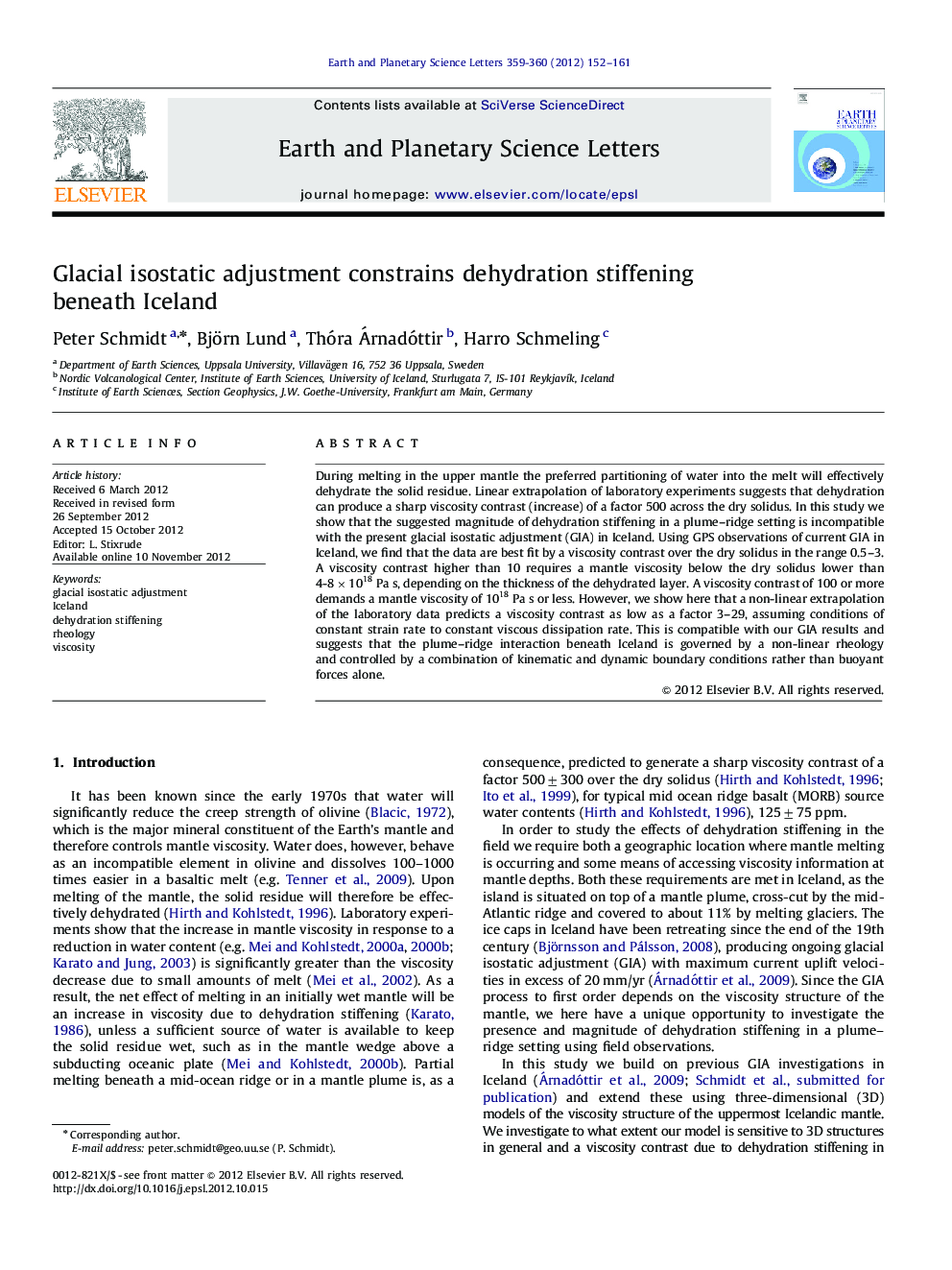| Article ID | Journal | Published Year | Pages | File Type |
|---|---|---|---|---|
| 6430395 | Earth and Planetary Science Letters | 2012 | 10 Pages |
During melting in the upper mantle the preferred partitioning of water into the melt will effectively dehydrate the solid residue. Linear extrapolation of laboratory experiments suggests that dehydration can produce a sharp viscosity contrast (increase) of a factor 500 across the dry solidus. In this study we show that the suggested magnitude of dehydration stiffening in a plume-ridge setting is incompatible with the present glacial isostatic adjustment (GIA) in Iceland. Using GPS observations of current GIA in Iceland, we find that the data are best fit by a viscosity contrast over the dry solidus in the range 0.5-3. A viscosity contrast higher than 10 requires a mantle viscosity below the dry solidus lower than 4-8Ã1018Pas, depending on the thickness of the dehydrated layer. A viscosity contrast of 100 or more demands a mantle viscosity of 1018Pas or less. However, we show here that a non-linear extrapolation of the laboratory data predicts a viscosity contrast as low as a factor 3-29, assuming conditions of constant strain rate to constant viscous dissipation rate. This is compatible with our GIA results and suggests that the plume-ridge interaction beneath Iceland is governed by a non-linear rheology and controlled by a combination of kinematic and dynamic boundary conditions rather than buoyant forces alone.
⺠We investigate the magnitude of dehydration stiffening in the Icelandic mantle. ⺠Current glacial isostatic adjustment suggests a small magnitude viscosity contrast. ⺠Best fit to GPS data is achieved for viscosity contrasts smaller than a factor 3. ⺠Our results are compatible with laboratory results and a non-linear mantle rheology.
